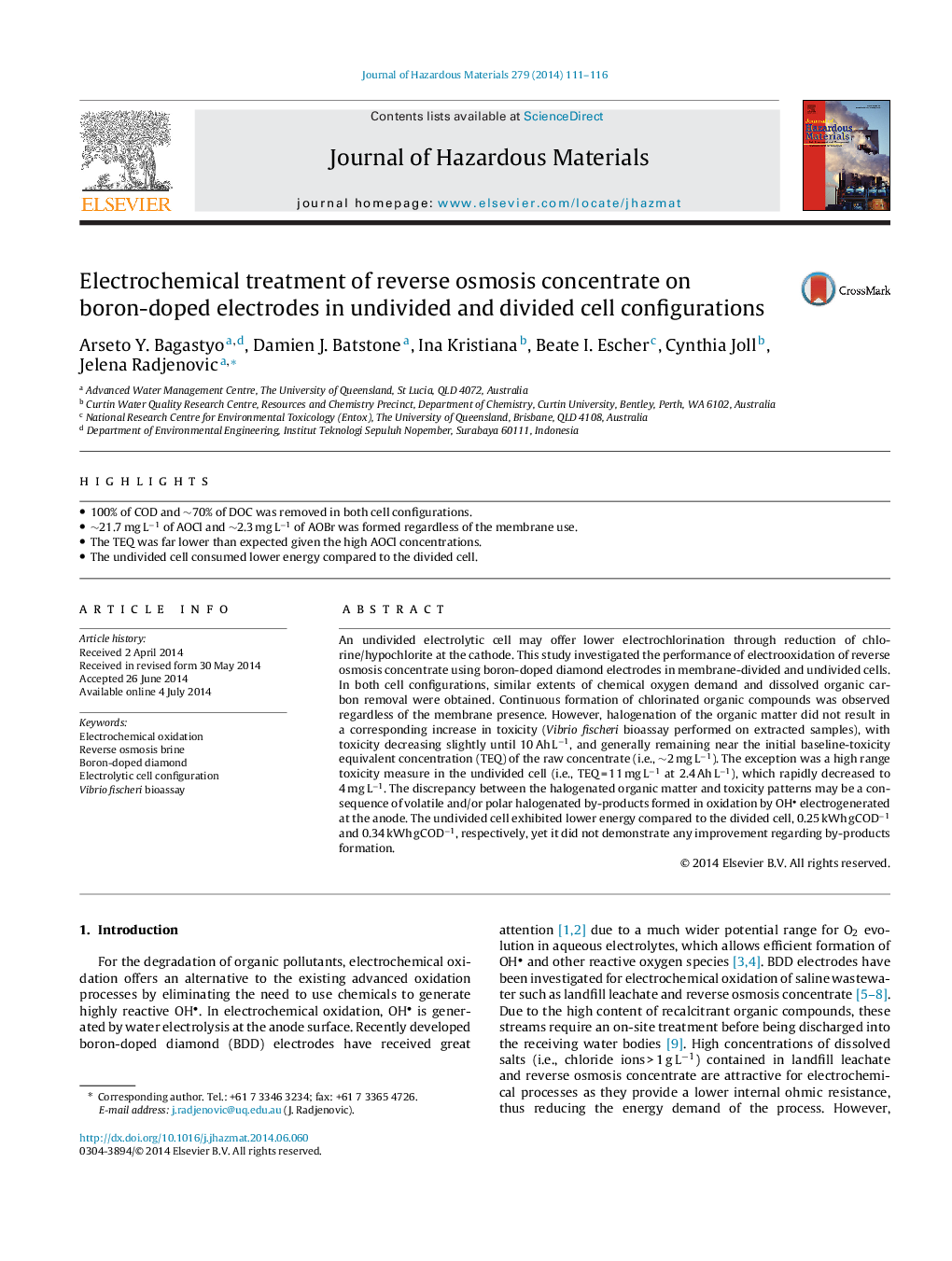| Article ID | Journal | Published Year | Pages | File Type |
|---|---|---|---|---|
| 576589 | Journal of Hazardous Materials | 2014 | 6 Pages |
Abstract
An undivided electrolytic cell may offer lower electrochlorination through reduction of chlorine/hypochlorite at the cathode. This study investigated the performance of electrooxidation of reverse osmosis concentrate using boron-doped diamond electrodes in membrane-divided and undivided cells. In both cell configurations, similar extents of chemical oxygen demand and dissolved organic carbon removal were obtained. Continuous formation of chlorinated organic compounds was observed regardless of the membrane presence. However, halogenation of the organic matter did not result in a corresponding increase in toxicity (Vibrio fischeri bioassay performed on extracted samples), with toxicity decreasing slightly until 10 Ah Lâ1, and generally remaining near the initial baseline-toxicity equivalent concentration (TEQ) of the raw concentrate (i.e., â¼2 mg Lâ1). The exception was a high range toxicity measure in the undivided cell (i.e., TEQ = 11 mg Lâ1 at 2.4 Ah Lâ1), which rapidly decreased to 4 mg Lâ1. The discrepancy between the halogenated organic matter and toxicity patterns may be a consequence of volatile and/or polar halogenated by-products formed in oxidation by OH electrogenerated at the anode. The undivided cell exhibited lower energy compared to the divided cell, 0.25 kWh gCODâ1 and 0.34 kWh gCODâ1, respectively, yet it did not demonstrate any improvement regarding by-products formation.
Related Topics
Physical Sciences and Engineering
Chemical Engineering
Chemical Health and Safety
Authors
Arseto Y. Bagastyo, Damien J. Batstone, Ina Kristiana, Beate I. Escher, Cynthia Joll, Jelena Radjenovic,
